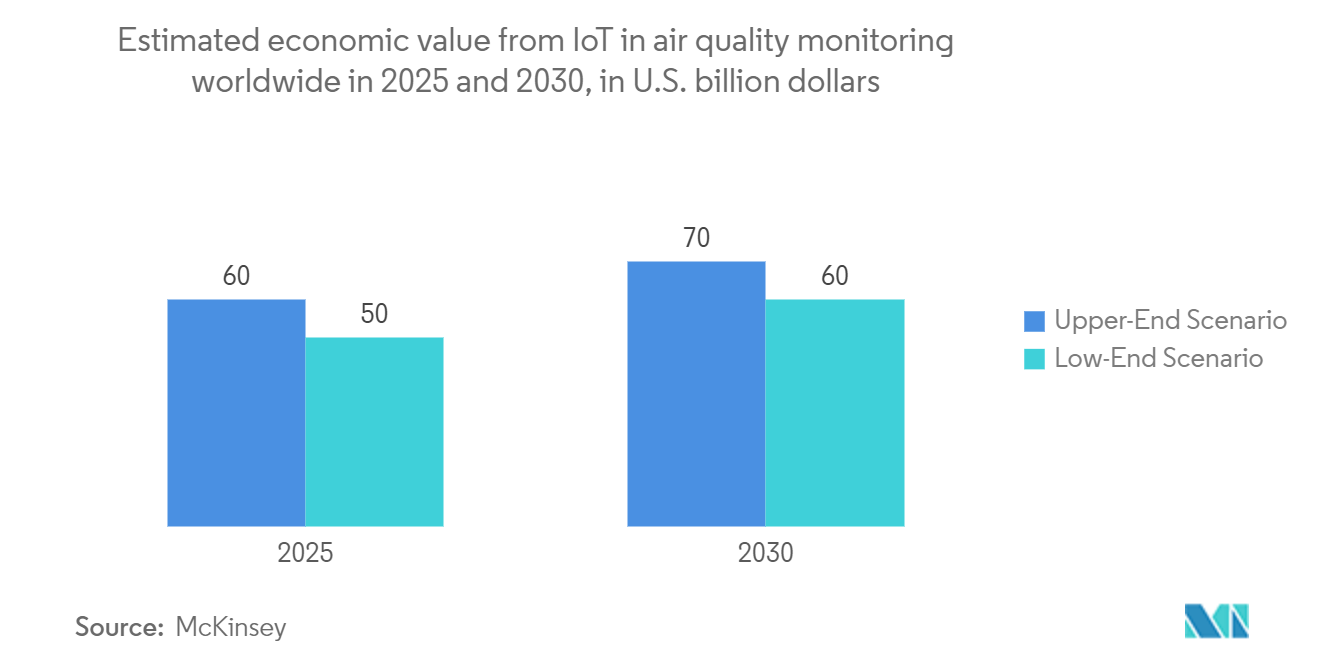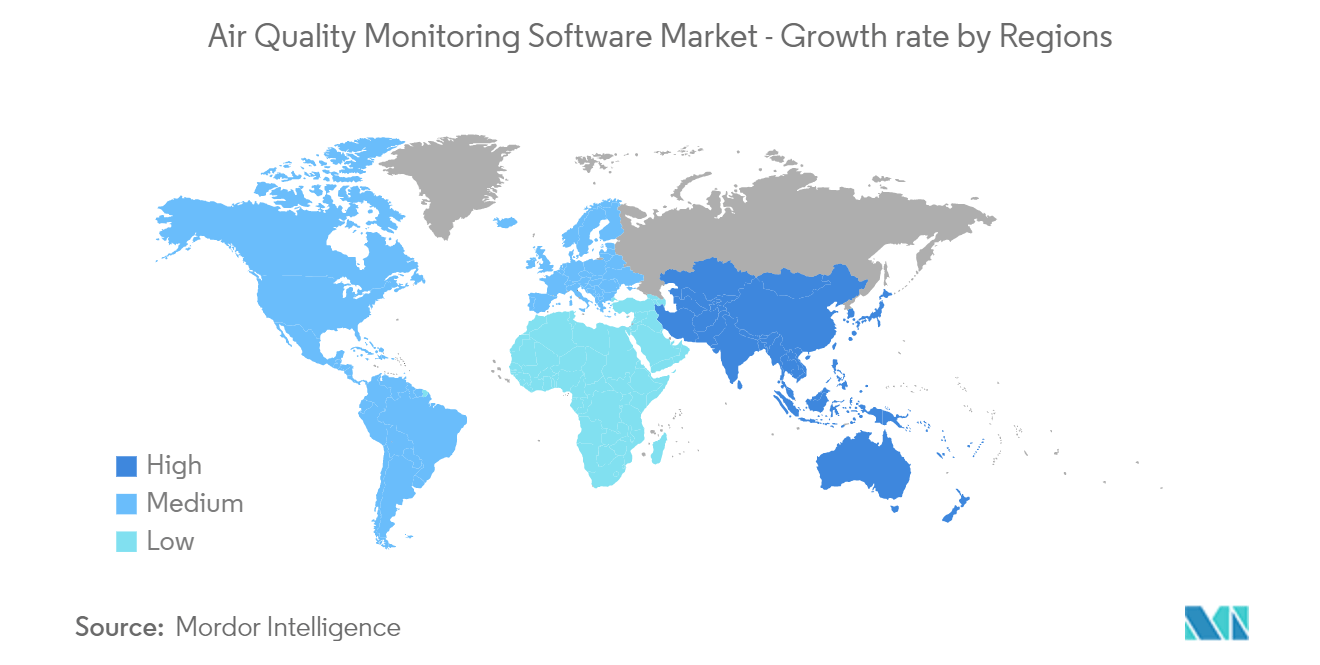Market Trends of Air Quality Monitoring Software Industry
This section covers the major market trends shaping the Air Quality Monitoring Software Market according to our research experts:
Indoor Air Quality Monitoring (IAQM) Demand Propelling Growth
- The software for monitoring indoor air quality is anticipated to dominate the industry. The factors can be attributed to the accurate assessment and control of indoor air pollution because dust, smoke, volatile organic compounds from varnishes and paints, odors, occupation-related contaminants, gases, particulate matter, pesticides, solvents, and microbial contaminants affect indoor air quality.
- Due to the growing awareness among end-users about lowering pollution and maintaining a threshold level of air quality inside the premises of the industrial vertical, the indoor application sector is anticipated to see a higher growth rate throughout the projected period. The rising use of air quality monitoring systems for interior applications, such as in offices, medical labs, etc., is one of the most recent developments in the market for air quality monitoring software.
- Governments have announced legislation for efficient monitoring and management of air pollution, which is anticipated to accelerate the use of indoor air quality monitors. Over the projected years, the market is expected to be driven by increasing government initiatives to create a demand for air quality monitoring software and strict government regulations for efficient indoor air pollution monitoring and control. The U.S. Environmental Protection Agency's Indoor Air Quality Division seeks to increase public awareness on indoor air quality.
- IoT monitoring systems are considered the most trustworthy options for IAQ measurement, considering the battery life expectancy and dependable single-hop communication capacities. These systems require less maintenance work since they have reduced latencies and less power usage. Real-time monitoring systems built on IoT are called smart systems, and therefore, most academics and manufacturers are drawn to this design. According to experts, the IoT system can monitor many factors without affecting system efficiency.
- By 2025, it is predicted that IoT services and products for air quality monitoring would be worth between USD 50 and USD 60 billion. By 2030, this figure is anticipated to increase to between USD 60 and USD 70 billion.

Higher Usage in The Asia Pacific Region
- In Asia, air pollution is reaching alarmingly high levels, which is bad for the population's health. The current state of affairs is primarily a result of the expanding industrialization of emerging nations, which has increased the number of chemical pollutants in the countries-some of which are also lethal.
- Major cities, including Shanghai, Zabol, Riyadh, Delhi, Dhaka, and Kolkata, have seen a sharp rise in air pollution. Because they release hazardous substances such as particulate matter, carbon monoxide, and sulfur dioxide, vehicles play a significant role in emissions. The particles are carcinogenic since they may enter the circulation and lungs deeply, resulting in heart attacks and lasting DNA alterations.
- Due to factors such as the commercialization of cutting-edge products, rising industrialization, and the adoption of stringent air pollution regulations in this area, Asia is expected to have the greatest market share. Also, in developing countries like India and Bangladesh, infrastructural activities are continuously growing, causing environmental pollution. This is a driving factor for air quality monitoring software in this region.
- Furthermore, governments have started taking steps to limit the flow of pollutants into the atmosphere. Meanwhile, by digitalizing a city's infrastructure, including its transportation systems and wireless sensors, more government measures to create smart cities are also predicted to spur consumer demand for sophisticated software for monitoring air quality.
- According to the leading British oil and gas company, BP, in the previous year, 17.74 billion metric tonnes of carbon dioxide emissions were created in the Asia-Pacific area. This exceeded the sum of the emissions from any other area that year. Nearly 60% of the CO2 emissions in the Asia-Pacific region and 31% of the global total were produced by China alone. North America, where 5.6 billion metric tonnes of CO2 were released into the atmosphere in 2021, was the second most polluting area.


